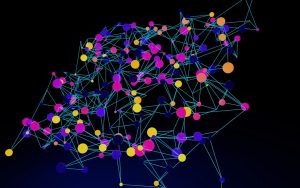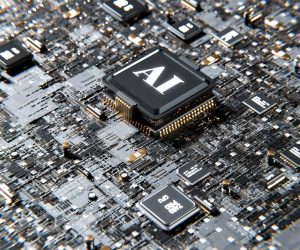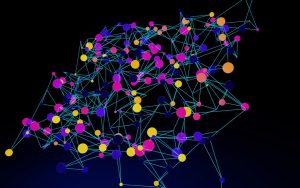Everyday Machine Learning: 10 Practical Use Cases
Discover 10 practical ways machine learning enhances daily life. Unlock tech’s potential today and transform your everyday experiences!
Personalized Recommendations
Understanding Personalized Recommendations
Personalized recommendations are a powerful application of machine learning that tailors suggestions to individual users based on their preferences, behaviors, and interactions. By analyzing vast amounts of data, machine learning algorithms can predict what a user might be interested in, enhancing their experience and engagement with a platform.
How Machine Learning Powers Recommendations
Machine learning models use collaborative filtering, content-based filtering, and hybrid methods to generate personalized recommendations.
Collaborative filtering analyzes user behavior and preferences to suggest items similar users have liked. Content-based filtering, on the other hand, recommends items similar to those a user has previously enjoyed.
Hybrid methods combine both approaches to improve accuracy and relevance.
Applications in E-commerce
In e-commerce, personalized recommendations are crucial for driving sales and enhancing customer satisfaction. By suggesting products based on a user’s browsing history and purchase patterns, retailers can increase conversion rates and average order values.
Machine learning algorithms continuously learn from user interactions, ensuring that recommendations remain relevant and timely.
Impact on Streaming Services
Streaming platforms like Netflix and Spotify heavily rely on personalized recommendations to keep users engaged. By analyzing viewing or listening habits, these services can suggest movies, shows, or songs that align with a user’s tastes.
This not only improves user satisfaction but also helps in retaining subscribers by consistently offering content that matches their preferences.
Challenges and Considerations
While personalized recommendations offer significant benefits, they also pose challenges such as data privacy concerns and the risk of creating echo chambers. It is essential for companies to balance personalization with user privacy, ensuring that data is handled responsibly.
Additionally, providing diverse recommendations can help prevent users from being exposed only to a narrow range of content.
Fraud Detection
Overview of Fraud Detection
Fraud detection is a critical application of machine learning, playing a vital role in safeguarding financial transactions and sensitive data. By leveraging algorithms and data analysis, machine learning models can identify patterns and anomalies that may indicate fraudulent activity.
This technology is essential for banks, credit card companies, and online retailers, among others, to protect their customers and assets.
How Machine Learning Enhances Fraud Detection
Machine learning enhances fraud detection by analyzing vast amounts of transaction data in real-time. Traditional rule-based systems often struggle to keep up with the evolving tactics of fraudsters.
In contrast, machine learning models can adapt and learn from new data, improving their accuracy over time. These models use techniques such as clustering, classification, and anomaly detection to identify suspicious behavior.
Types of Machine Learning Models Used
Several types of machine learning models are commonly used in fraud detection.
Supervised learning models, such as decision trees and neural networks, are trained on labeled datasets to recognize fraudulent patterns. Unsupervised learning models, like clustering algorithms, help identify unusual patterns in data that do not conform to typical behavior.
Additionally, ensemble methods, which combine multiple models, often yield higher accuracy in detecting fraud.
Challenges in Fraud Detection
Despite its effectiveness, fraud detection using machine learning faces several challenges. One major issue is the imbalance in datasets, where fraudulent transactions are significantly fewer than legitimate ones.
This imbalance can lead to models that are biased towards predicting non-fraudulent activity. Additionally, fraudsters constantly evolve their techniques, requiring continuous updates and retraining of models to maintain their effectiveness.
The Future of Fraud Detection
The future of fraud detection lies in the integration of advanced technologies such as deep learning and artificial intelligence.
These technologies promise to enhance the precision and speed of fraud detection systems. As data privacy concerns grow, the development of privacy-preserving machine learning techniques will also become increasingly important.
Overall, the continuous advancement of machine learning algorithms will play a crucial role in staying ahead of fraudsters and protecting consumers.
Virtual Assistants
Introduction to Virtual Assistants
Virtual assistants are AI-powered applications designed to assist users by performing tasks or services based on commands or questions. They leverage machine learning algorithms to understand and process natural language, making them increasingly sophisticated and capable of handling complex queries.
Natural Language Processing
At the core of virtual assistants is natural language processing (NLP), a branch of artificial intelligence that enables machines to understand, interpret, and respond to human language.
NLP allows virtual assistants to comprehend user requests, analyze the context, and provide accurate responses or actions. This capability is crucial for offering a seamless and intuitive user experience.
Personalization and Context Awareness
Machine learning enables virtual assistants to learn from user interactions, improving their ability to provide personalized responses.
By analyzing past interactions and user preferences, virtual assistants can tailor their suggestions and actions to better suit individual needs. This context awareness enhances the relevance and usefulness of the assistant, making it a more integral part of daily life.
Task Automation
Virtual assistants excel at automating routine tasks, freeing up users’ time and reducing cognitive load.
They can manage calendars, set reminders, send messages, and even control smart home devices. By automating these tasks, virtual assistants streamline workflows and improve productivity, allowing users to focus on more important activities.
Continuous Improvement
Machine learning empowers virtual assistants to continuously improve over time.
As they interact with users, they gather data that helps refine their algorithms, leading to better understanding and more accurate responses. This continuous learning process ensures that virtual assistants remain up-to-date with user needs and evolving language patterns.
Image Recognition
Understanding Image Recognition
Image recognition is a crucial application of machine learning that involves identifying and detecting objects or features in a digital image or video.
This technology leverages deep learning algorithms to analyze and interpret visual data, enabling machines to mimic human vision capabilities. The process typically involves training models on vast datasets to recognize patterns and categorize images accurately.
Applications in Everyday Life
Image recognition is integrated into numerous everyday applications, enhancing convenience and efficiency.
In smartphones, facial recognition technology allows for secure and quick user authentication. Social media platforms use image recognition to automatically tag individuals in photos, streamlining the sharing process and enhancing user experience.
In retail, image recognition helps in inventory management by automatically identifying and counting products on shelves.
This technology also powers visual search engines, allowing users to search for products using images instead of text, thus improving search accuracy and user satisfaction.
Impact on Healthcare
In the healthcare sector, image recognition plays a vital role in diagnostic processes. Medical imaging technologies, such as MRI and CT scans, utilize image recognition to detect abnormalities and assist in early diagnosis of diseases.
This leads to more accurate and timely interventions, ultimately improving patient outcomes.
Furthermore, image recognition aids in the analysis of medical images to identify patterns and correlations that might be overlooked by human practitioners, thus enhancing the precision of medical research and treatment plans.
Challenges and Future Prospects
Despite its widespread applications, image recognition faces challenges such as the need for large datasets and computational resources, as well as concerns about privacy and security. Ensuring the ethical use of image data and addressing biases in training datasets are critical considerations for the future development of this technology.
Looking ahead, advancements in image recognition are expected to drive innovations in various fields, including autonomous vehicles, where it will be essential for navigation and obstacle detection.
As machine learning models continue to evolve, image recognition will become increasingly sophisticated, offering new possibilities and transforming industries across the globe.
FAQ
Q1: What are the cost implications of implementing everyday machine learning use cases in a business setting?
A1: The cost of implementing machine learning (ML) solutions can vary significantly depending on the complexity and scale of the use case. For everyday applications, the cost is often more manageable as many solutions can be built using open-source tools and platforms that offer free tiers, such as TensorFlow, PyTorch, or Google Colab. However, businesses should consider costs related to data acquisition, storage, and processing, as well as the potential need for specialized hardware like GPUs for more intensive computations. Additionally, there may be expenses associated with hiring skilled personnel or training existing staff to manage and maintain these systems. For small to medium-sized enterprises, leveraging cloud-based ML services like AWS SageMaker or Azure Machine Learning can provide scalable solutions with pay-as-you-go pricing, helping to control costs effectively.
Q2: How accessible are everyday machine learning use cases for non-engineers or those without a technical background?
A2: Machine learning is becoming increasingly accessible to non-engineers thanks to the development of user-friendly tools and platforms. Many ML platforms now offer drag-and-drop interfaces and automated machine learning (AutoML) capabilities that allow users to build models without deep technical expertise. Tools like Google’s AutoML, DataRobot, and Microsoft’s Azure Machine Learning Studio are designed to simplify the process of model creation, training, and deployment. Additionally, there are numerous online resources, courses, and communities that provide guidance and support for beginners. While some level of understanding of data and basic statistics is beneficial, these tools are lowering the barrier to entry, enabling business professionals, analysts, and other non-technical stakeholders to leverage ML in their everyday operations.
Q3: What are the common implementation challenges when integrating machine learning use cases with existing business tools and systems?
A3: Integrating machine learning use cases with existing business tools and systems can present several challenges. One of the primary issues is data compatibility and quality. Ensuring that data is clean, well-structured, and compatible with ML models is crucial for successful implementation. Another challenge is the integration of ML outputs with existing workflows and decision-making processes. Businesses often need to adapt their systems to incorporate insights generated by ML models, which may require changes in software architecture or the development of new APIs. Additionally, there may be resistance to change from employees who are accustomed to traditional methods. To overcome these challenges, businesses should focus on clear communication, training, and involving end-users in the implementation process. It’s also beneficial to start with pilot projects to demonstrate value and build confidence in ML solutions before scaling up.
Takeaway
Ready to revolutionize your workflow? Try our cutting-edge AI tool today and supercharge your productivity in minutes. Stay ahead of the curve with the latest tech trends – subscribe now for exclusive updates. Join our vibrant community of tech enthusiasts and dive into exciting discussions. Don’t miss out – take the next step towards innovation!











Comments